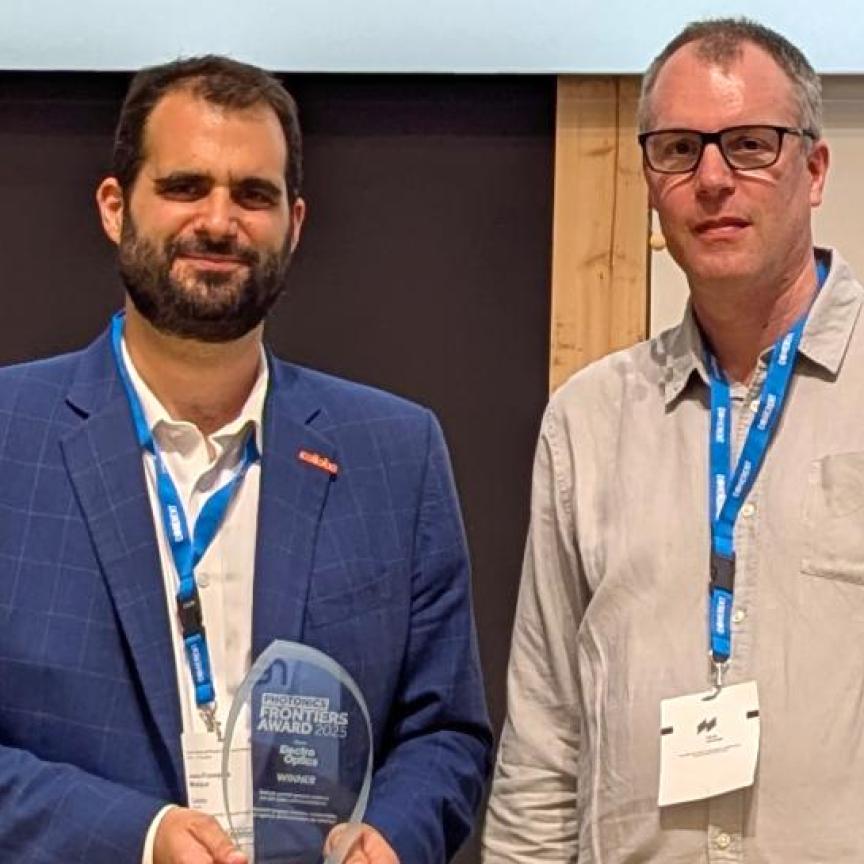Climate change is a familiar topic for most schoolchildren, but how this is occurring and how to study it on a day-by-day basis are far more elusive issues. Some of the main contributors to climate effects are clouds and tiny airborne particles known as aerosols.
Most people have heard about how chlorofluorocarbons react with ozone in the atmosphere to destroy our protection from harmful ultraviolet radiation. However, other aerosols such as desert dust, smoke and even water droplets can also have dramatic effects. Some aerosols absorb sunlight or reflect radiation back to earth, contributing to the greenhouse effect, while others reflect sunlight away from the planet, counteracting the greenhouse effect.
And some hygroscopic compounds, which readily absorb moisture, such as sulphates, serve as nucleation sites for clouds and so influence precipitation and the lifetime of clouds. What’s more, it’s not known to what extent these are man-made effects and how much the aerosols result from natural phenomena such as forest fires and volcanoes.
If all this wasn’t complicated enough, winds can quickly spread these particles across the earth and to different heights above the earth, where they can influence the atmosphere in different ways. And although ground-based chemical techniques can determine what chemical compounds are present in the air at particular locations, which is a valuable tool for monitoring local air quality, there has been, until recently, no reliable method to study the vertical distributions of such compounds and to track their movements across the globe.
Now, however, a range of satellites and their instruments have stepped up to the challenge of studying these particles. One of these is the Cloud-Aerosol Lidar and Infrared Pathfinder Satellite Observation (CALIPSO) satellite, a three-year joint mission between Nasa and Centre National d'Etudes Spatiales (CNES) of France. This satellite set off at the end of April this year and is already starting to return valuable data about the clouds and aerosol distributions around our planet.
As David Winker, principal investigator, Nasa Langley Research Center, reveals: ‘On the first day that the instrument was turned on, 7 June, we saw, over Indonesia, the remnants of a volcanic eruption that occurred in the Caribbean at the end of May. Two weeks after the eruption, the particles emitted had probably gone one and a half times around the globe.’
And the observations have not stopped there. ‘Over the summer we saw clouds in the stratosphere over Antarctica. This was the first time that clouds could be seen across this continent at night.’ Such observations are important because of the chlorofluorocarbons that are responsible for the hole in the ozone layer.
Laser scattering reveals cloud height
Winker and colleagues are studying cloud and aerosol distributions using Lidar techniques, which measure the scattering of laser light. The time between sending out a laser pulse and detecting the scattering can determine the height of whatever the pulse was reflected off. Finding out what caused the scattering can be difficult with just one wavelength of light so the equipment on CALIPSO measures scattering at two wavelengths, 1.06nm in the near infrared (IR) and 0.532nm in the green.
Reflections off spherical particles, such as water droplets, retain their polarisation, but non-spherical particles such as ice cause the polarisation to be lost. This enables the instrument to distinguish between water clouds and ice clouds. The detectors for this reflected light have to be very sensitive over a large range as the measurements from CALIPSO go up to altitudes of 40km.
‘The returns from the mid-stratosphere are very low, but the returns from dense boundary layer clouds can be up to 106 times more,’ explains Winker. ‘Photomultiplier tubes are used at the green wavelength, because they can count single photons and are linear over a large range. However photomultipliers are not good at IR wavelengths so we use avalanche photodiodes.’
All this equipment, along with that on another cloud satellite that is flying with CALIPSO and looking at dense clouds, should yield data on all the clouds and aerosols in the atmosphere. The CALIPSO team is working with groups around the world to use this data in climate models.

A satellite will help measure the polarisation of sunlight
The importance of accuracy
Climate modelling is also a big priority for the applied physics and applied mathematics department of Columbia University, USA. ‘We want to know how climate changes over the course of 50 or 100 years,’ explains Jacek Chowdhary, who is an associate research scientist involved in this research. ‘We don’t have that data yet so we have to simulate it.’
He believes accuracy is a key issue to doing this effectively. ‘Any errors propagate in simulations, so we want to make the initial data as accurate as possible.’ This commitment to minimising errors played a major role in the Columbia team’s choice of instruments for its cloud and aerosol observations.
This group will also be making space measurements from a Nasa satellite. GLORY, scheduled to launch in 2008, will carry the Aerosol Polarimetry Sensor (APS), an instrument that will measure the polarisation of sunlight reflected off the earth and atmosphere. ‘Polarisation is an inherent property of light,’ explains Chowdhary. ‘The polarisation of sunlight reflected by the earth is very sensitive to what reflected it back, such as amounts, chemical composition, size and shape of particles in the atmosphere’.
So how will this polarisation be measured? The GLORY team has opted for a scanning, rather than an imaging approach in order to gain the best accuracy. With imaging, a large number of pixels can be recorded simultaneously but sequential measurements with different positions of a polarisation filter are required to determine the polarisation. This reduces the accuracy of any polarisation measurements because the satellite continues to move while the filter is being rotated. The scanning approach, on the other hand, looks at just one pixel at a time but all the measurements required to determine the polarisation can be done simultaneously.
In the APS, each pixel is viewed by six telescopes, which separates the incoming image into two differently polarised images. As polarisation of light is defined by three parameters (Stokes parameters), pairs of telescopes are needed to gain enough information to determine the polarisation. Each pair of telescopes then has a dichroic beamsplitter that gives three different wavelengths of light, to simultaneously determine the polarisation at nine different wavelengths for each pixel.
‘With an imager, the percentage of polarised light as a fraction of the intensity can only be measured to an accuracy of about one per cent. With a scanner the accuracy is about 0.1 per cent,’ says Chowdhary. ‘With an imager you get a wider range so can cover the earth much quicker, but we wanted better accuracy at the expense of coverage.’
This accuracy brings with it its own challenges. ‘If you make extremely accurate measurements of particles you have to be much more accurate in the simulations to match the observations. It is like starting to wear glasses and suddenly being able to see a lot more,’ says Chowdhary.
Benefits of space observation
So what are the advantages of making these observations from space? There are, after all, some very comprehensive ground-based studies. Nasa’s Aerosol Robotic Network (AERONET), for example, has sun photometers at a huge network of observation sites across the globe, looking at light from the sun and converting this into observations about the atmosphere. ‘Ground-based observations can make a lot of measurements but don’t have global coverage,’ points out Chowdhary. And there is another area where space observation is required: finding out what goes on over the seas. ‘Oceans cover more than 70 per cent of the planet so cannot be ignored, although there are a few islands where it is possible to do some observations,’ says Chowdhary.
But it is not really a question of ‘either…or’. Climate change is a very complicated issue. To learn what is going on will require data from many different studies to be combined. Then, it is hoped, groups around the world will be able to simulate what we should expect for the future climate of our planet.


